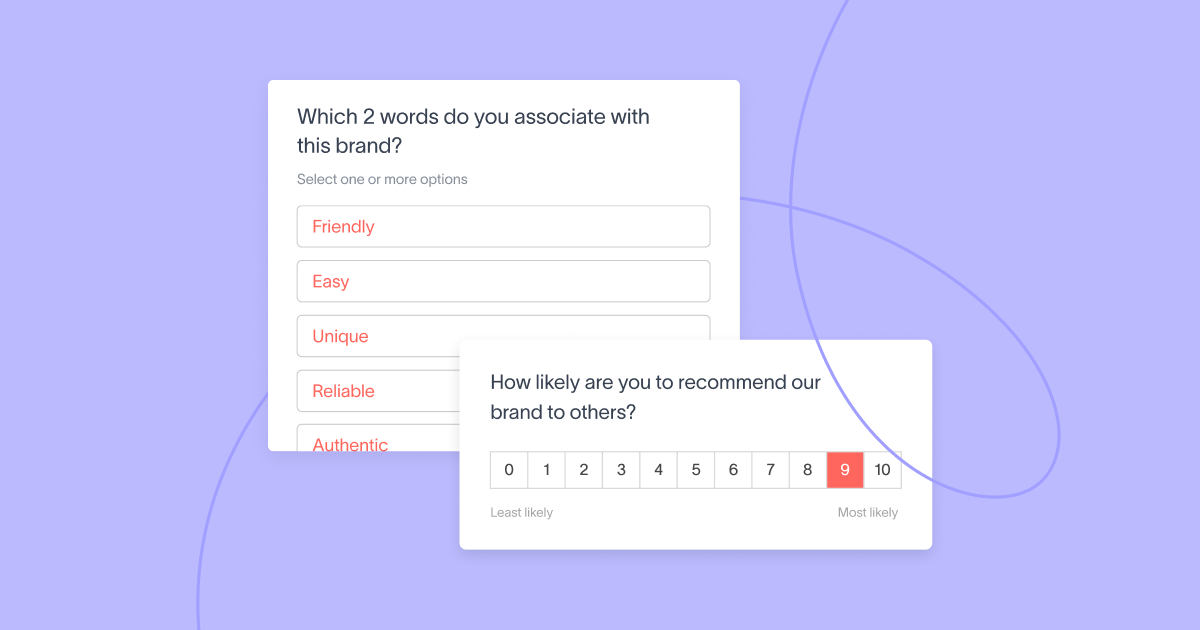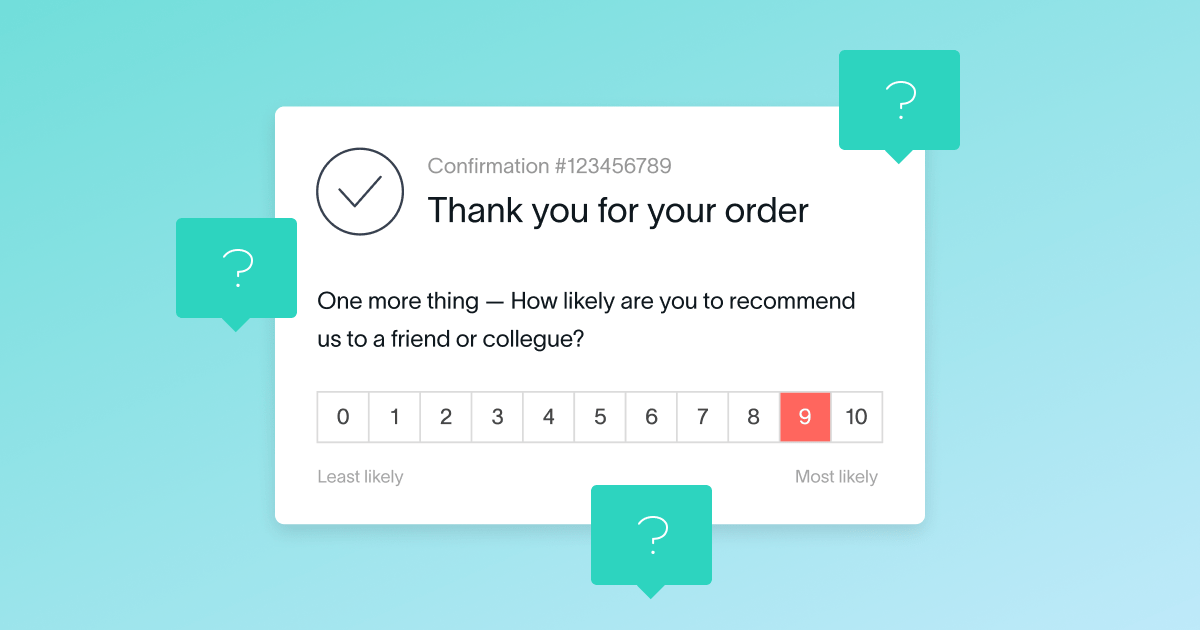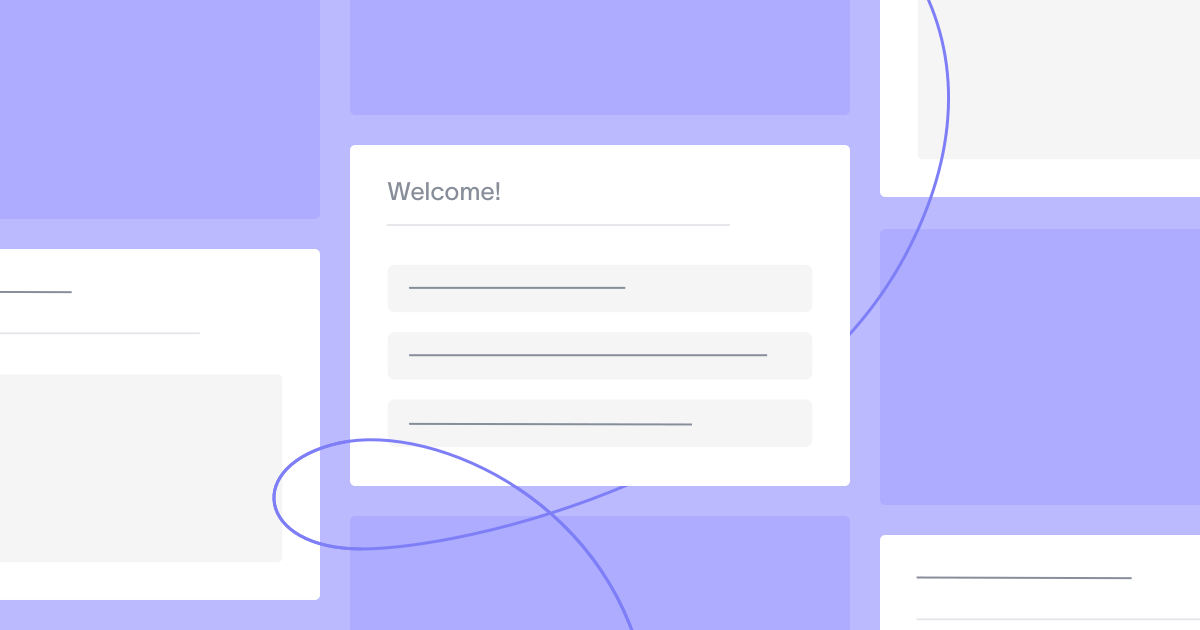What do customers really think about your brand? Understanding your customers’ perceptions of your brand can help you bolster market research, identify ways to improve your brand’s reputation, and much more. Brand perception surveys are instrumental tools for uncovering not only how customers feel about your brand but also how they communicate that to new, potential customers and beyond.
In this post, we’ll cover what a brand perception survey is, why they’re important, what types of questions to ask, and who you should be asking.
What is a brand perception survey?
Brand perception surveys provide insights into how individuals perceive your brand – from current and potential customers, to external stakeholders. This type of survey paints a picture of your brand’s image from the perspective of your target audience.
Why are brand perception surveys important?
Brand perception surveys are valuable tools for understanding your target market and gathering insights that can enhance your marketing campaigns, shape your brand identity, and drive better business outcomes. They also allow you to identify any discrepancies between how customers perceive your brand and how you want them to perceive it, enabling necessary adjustments.
Additionally, brand perception surveys can provide insights into competitor awareness. By surveying customers about their knowledge of your brand and comparing it to their awareness of competitors, you gain a clearer picture of your market positioning.
Lastly, these surveys can reveal whether customers have a positive or negative experience with your company and help measure brand equity – the value your brand adds to your business.
Top brand perception survey questions
Brand perceptions survey questions allow you to dig into customers’ thoughts and feelings about your brand. Below, we’ve listed the top questions to ask to get to the heart of how customers perceive you.
1. How likely are you to recommend [your brand] to a friend or colleague?
This classic Net Promoter Score (NPS) question helps you measure brand loyalty. Be sure to include a Likert scale of 1-10 so respondents can choose a numerical response that you, in turn, can tally and analyze at scale.
2. When you think of [your brand], what’s the first thought that comes to mind?
This open-ended question lets survey respondents share their perception of your brand in their own words.
Open-ended questions won’t necessarily yield data you can track over time, but these responses can give you useful context and sometimes reveal hidden insights about your brand.
3. How does [your brand] make you feel?
Asking how your brand makes people feel should elicit different responses than asking what people think of your brand. Include an open-field text box so respondents can share their feelings in their own words.
4. Which of the following words best describe [your brand]?
Since this is a close-ended question, be sure to include a list of adjectives (ranging from positive to negative) for respondents to choose from. You have the option to make this a multiple-choice question by allowing respondents to select more than one answer.
5. How would you describe [your brand] to a friend?
If you ever wanted to be a fly on the wall during a customer’s conversation about your brand, this question gets you close. Ask how they would describe your brand, and let them answer in their own words.
6. How would you describe your last interaction with [your brand]?
This question helps you pinpoint what’s working and what’s not in the customer experience. By asking about a specific interaction, you can identify pain points along the customer journey – and address them.
7. Which best describes your most recent experience with [your brand]?
Similar to the above question, this question asks about the customer experience, but in the form of a close-ended question. Be sure to include a range of answer options for respondents to choose from.
8. How would you describe your level of attachment to [your brand]?
Asking how attached a customer is to your brand can help you gauge customer loyalty. The more loyal your customers, the more likely they are to purchase from you (again) – and encourage others to do the same.
9. What three words best describe your feelings towards [your brand]?
This multiple-choice question allows respondents to select from a list of answer options conveying their feelings about your brand. Include a range of positive and negative emotions – and the option to write in an answer – so that respondents can share their honest opinions.
10. How familiar are you with [your brand]?
This question is best paired with a Likert scale so that respondents can select a number that associates with their level of familiarity. Doing so will also help you track brand familiarity over time, and gauge the efforts that helped enhance your brand perception.
11. How likely are you to purchase a product or service from [your brand]?
This question should also include a Likert scale so customers can select the option that best applies to them.
12. Have your feelings towards [your brand] changed in the last year?
This question can reveal how your audience’s experience with your brand has changed. It’s especially useful if your brand has had recent pick-up in the media (positive or negative), has gone through leadership/organizational changes, introduced new products or services, and so on.
13. Do you consider [your brand]’s products or services a solution to any of your problems?
This question helps you understand how and to what extent your product or service meets customers’ needs.
Other types of brand surveys
There are other ways to approach learning and measuring the impact and perception of your brand. You might want to consider the below survey questions and how they could complement how you measure brand perception.
Brand awareness surveys
Brand awareness is a metric that measures how well consumers recognize your brand: from your logo, imagery, or overall brand reputation. Popular brands that have a strong presence in the market achieve high brand awareness among consumers. To measure how aware consumers of your brand, ask the following questions in your brand awareness survey:
- When did you first hear about [your brand]?
- What do you think [your brand] does?
- How familiar are you with [your brand]?
- Have you seen, heard, or talked about [your brand] in the past week?
TIP: Take a look at our pre-built brand awareness survey template with the questions above.
Brand identity surveys
Brand identity surveys help you gauge the image customers have of your brand and how it aligns with your vision for the brand. This type of brand survey uncovers how well your organization has executed the brand vision based on the customer’s view of your brand.
You can ask questions like:
- What quality or attribute do you associate with [your brand]?
- What products or services does [your brand] specialize in?
- What other brands do you associate with [your brand]?
- What makes you purchase from [your brand] over a competitor?
Brand positioning surveys
Brand positioning surveys help you better understand your position in the market. Does your product or service measure up to what competitors offer or the needs of the customer? This type of survey is how you find out. To gauge your brand positioning, ask customers questions like:
- Which brand of [your product/service category] do you prefer?
- Why do you buy from [your brand]?
- What makes [your brand]’s products/services unique?
- What values of [your brand] stand out to you?
Who should you send brand perception surveys to?
As with any survey, the audience you survey will dictate the data you get back. Before you send out your survey, carefully consider who is the appropriate audience to study based on your goals.
For example, if you want to understand how Gen Z perceives your brand, you should target Gen Z participants for your study. Including other generations in your survey will glean potentially interesting (and complementary) insights – but it’s likely not worth the effort if those insights don’t align with the goal of your survey.
On the other hand, if you want to understand how customers, potential customers, or other stakeholders perceive your brand related to a specific event, such as a new product launch, you’d want to target a wider audience – i.e., anyone who might have heard about or seen the new product. In this case, creating a representative sample – that is, a smaller group of individuals who represent your target audience – could be the best method for this survey.
In summary, it’s crucial to establish who your target audience is first based on the goal(s) of your survey. Then, survey that audience to understand their perceptions of your brand. With those insights, you can make data-driven decisions to bridge the gap between how they see you and how you want to be seen.
Brand perception survey template
Create your survey from scratch or jump into our pre-built brand perception survey template. Pre-populated with the questions from this post, you’ll be able to start collecting valuable insights from customers in minutes, not days.






